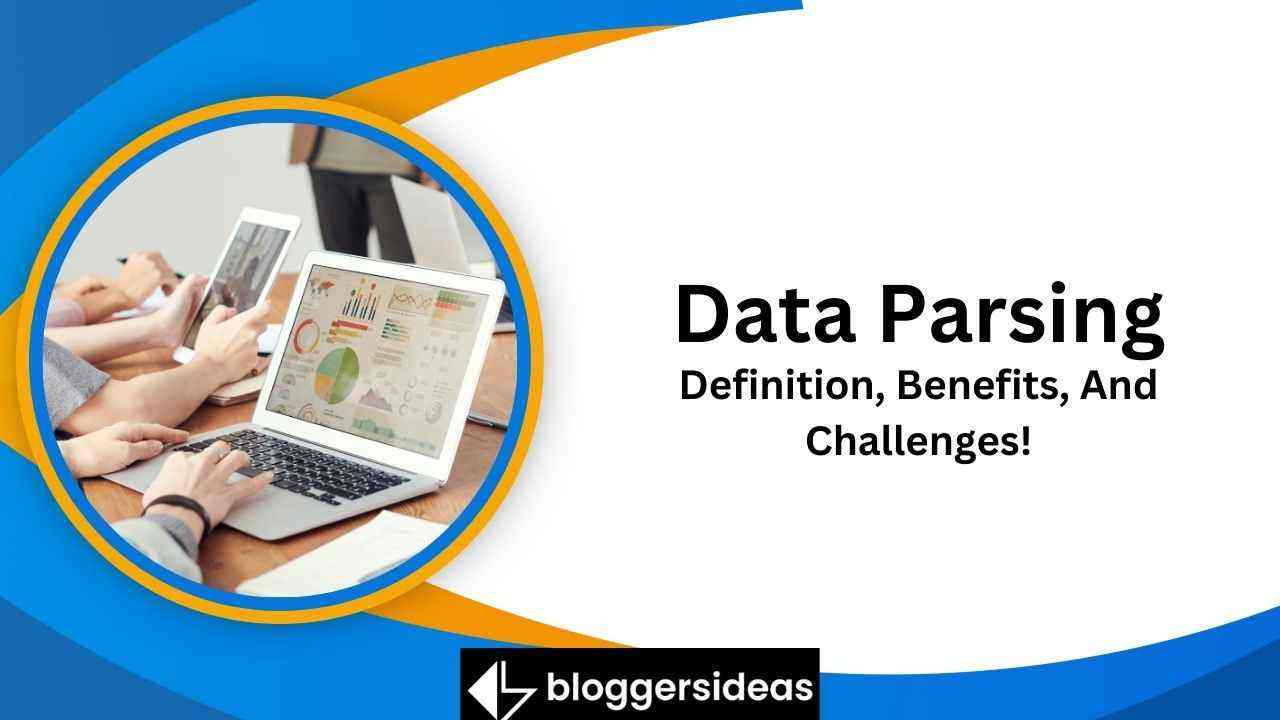There are various crucial abilities that an analyst needs to possess. The basic knowledge that all analysts should have is typically defined, followed by the specializations that will distinguish an analyst.
Data Parsing is one such skill that data analysts should consider developing.
Why?
Unstructured data must be converted into organized data or new data before it can be used. A data parser often performs data parsing to convert raw data into types that are easier to comprehend, use, or keep.
What Is Data Parsing?
Data parsing involves transforming data from one format to another format. When we need to read computer code and produce machine code, they are frequently used in compilers.
When programmers create code that is executed on hardware, this frequently occurs. SQL engines also include parsers. A SQL query is parsed by SQL engines before being executed and producing results.
This typically occurs in the case of web scraping when data has been taken from a web page via web scraping.
Making the data easier to read and better for analysis after you’ve scraped it from the web is the next step to ensuring that your team can properly utilize the results.
Benefits Of Data Parsing
Data parsing has several advantages that are applicable across many sectors. Let’s take a look at the top five reasons why you should use data processing.
1. Cost-effective and less Time consuming
You can save a lot of your time and effort by automating repetitive chores with data parsing. Furthermore, transforming data into more readable types allows your team to grasp the data faster and perform their duties more easily.
2. Greater Data Versatility
You may reuse data that has been parsed and converted to a human-friendly version for a variety of reasons. In a nutshell, data parsing broadens the scope of your data operations.
3. High-Quality Data
Usually, converting data to more organized forms necessitates data cleaning and standardization. This implies that data parsing enhances total quality.
4. Data Integration Simplified
Data parsing urges you can convert data from different sources into a unique format. This allows you to incorporate various data sources into a single destination, which could be an application, technique, or procedure.
5. Enhanced data analysis
Working with organized data simplifies data to study and analysis. This also results in more in-depth and precise analysis.
Creating vs Purchasing a Data Parsing Tool
As should be obvious, the efficacy of a data parsing process is determined by the type of parser used.
As a result, the question of whether it would be preferable to let the technical staff create a data parser or simply employ an existing business remedy, such as Bright Data, arises.
Developing your own parser is more customizable but takes more time and effort, whereas purchasing one is faster but gives you fewer options. Obviously, the situation is more complicated than that.
So, let’s attempt to figure out whether you should develop or purchase a data parser.
Creating A Data Processor
In this case, your business has an internal development team capable of creating a custom data parser.
Pros:
- You can modify it to meet your particular requirements.
- You possess the data parser code and are in complete authority over its development.
- If used frequently, it may be less expensive in the future than purchasing a pre-built product.
Cons:
- It is impossible to overlook the costs of development, program management, and server hosting.
- Your team of developers will have to devote a significant amount of time to designing, building, and maintaining it.
- Performance issues may arise, particularly if the spending plan for an efficient server is restricted.
Building a parsing tool from the ground up always has advantages, especially if it must satisfy particularly complicated or specific requirements.
At the same time, this takes a significant amount of work and resources. As a result, you may be unable to finance it or simply do not want your highly skilled team to waste time developing such a tool.
Purchasing A Data Processor
In this situation, you purchase a commercial solution that provides the data parsing functions you require. This usually entails purchasing a software license or paying a small charge per API call.
Pros
- Your development team will not waste time or resources on it.
- There are no secrets and the cost is obvious from the start.
- The provider, not your staff, will be in charge of updating and maintaining the tool.
Cons
- The tool might not satisfy your future requirements.
- You have no influence over the tool.
- You could end up investing more money than you intended to.
Purchasing a parsing application is fast and simple. You’re set to start parsing data following a few clicks. At the same a period of time if you opt for a tool that is not sufficiently advanced, it may soon fall short and fail to meet your future needs.
As you just found out, the decision between building and buying is heavily influenced by your objectives and needs.
The most suitable answer to this question would be to have a business tool that can assist you in creating a customized data parser. Fortunately, it does exist and is known as Web Scraper IDE!
Web Scraper IDE is a full-featured developer tool with pre-built parsing tools and approaches. This enables you to reduce development time as well as scale more effectively.
It also includes Bright Data’s proxy unblocking features, allowing you to scrape the Web privately.
If this seems too complicated, bear in mind that Bright Data offers Data as a Service. You can specifically ask Bright Data to create a custom dataset suited to your requirements.
This is going to be provided either upon request or on a regular basis. Bright Data will essentially get you the internet data you require when you require it while also ensuring speed, quality, and delivery. This simplifies data processing even more!
Quick Links:
Final Thoughts: Data Parsing 2025
Data parsing enables you to instantly convert raw data into a more usable format. This means saving both labor and time while also improving the data quality.
As a consequence, data analysis is going to be simpler and more efficient. Simultaneously, data parsing presents some difficulties, including special characters and mistakes in input files.
As a result, creating an efficient Data parser is not a simple task. This is why you should consider investing in a commercial data parsing tool, such as Bright Data’s Web Scraper IDE.
Also, keep in mind that Bright Data has a large collection of ready-to-use databases.






